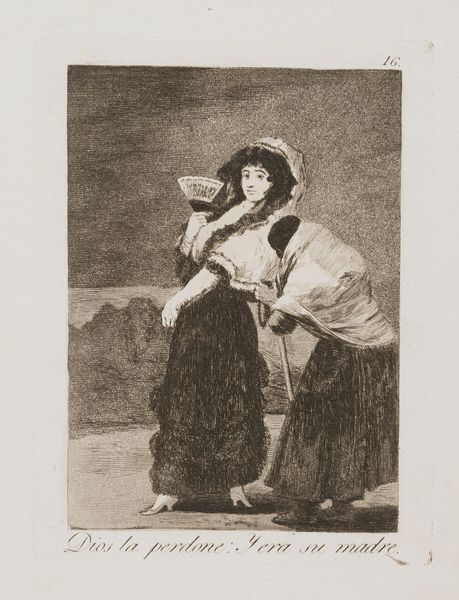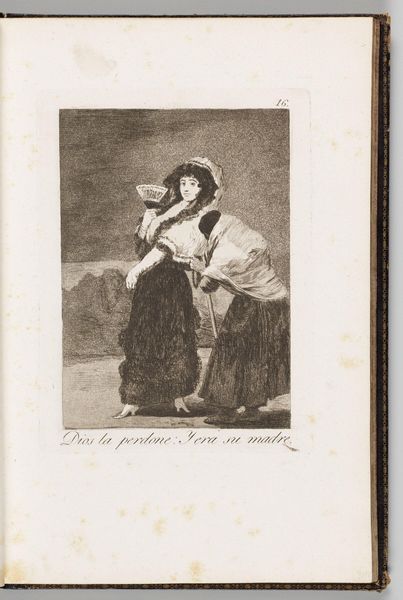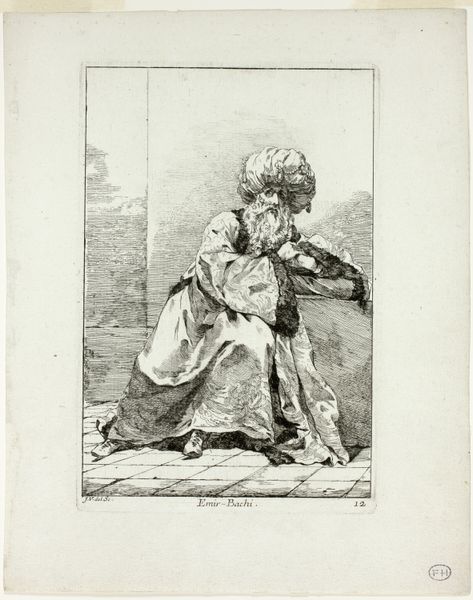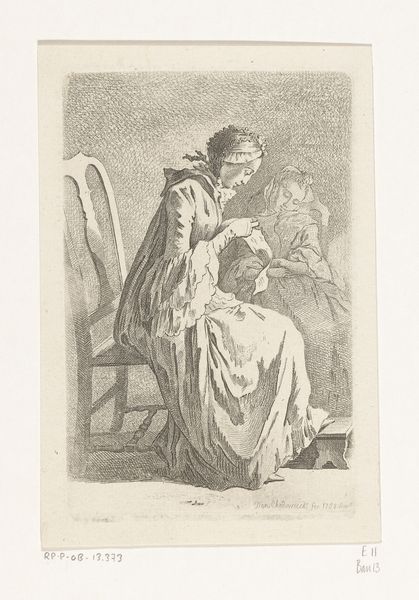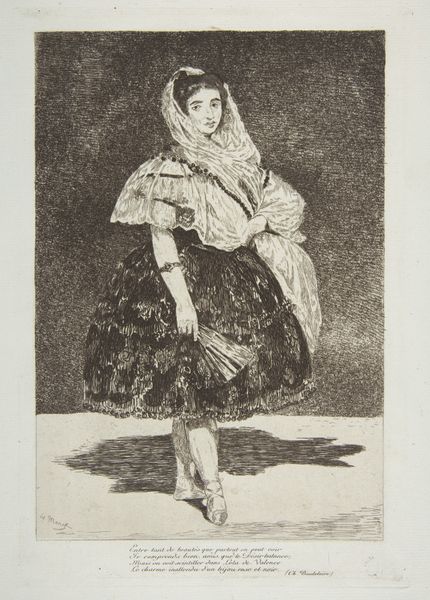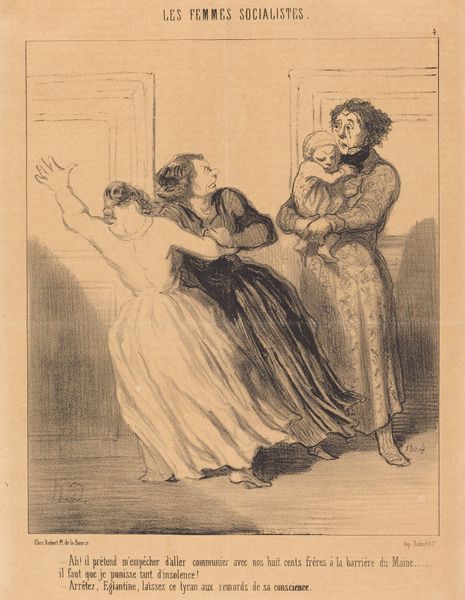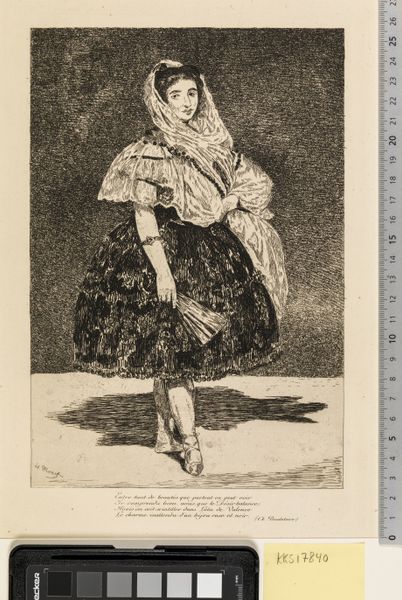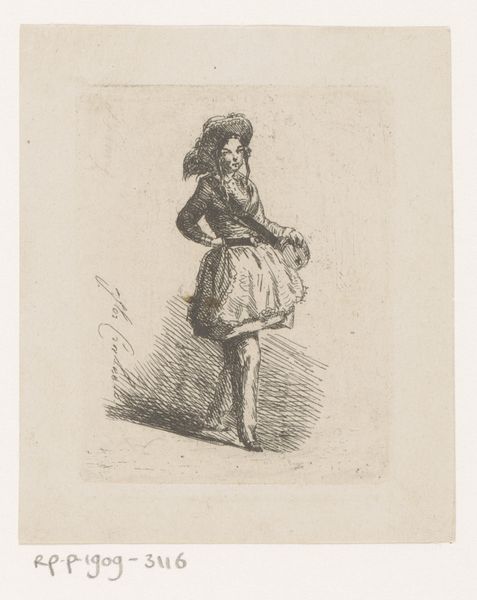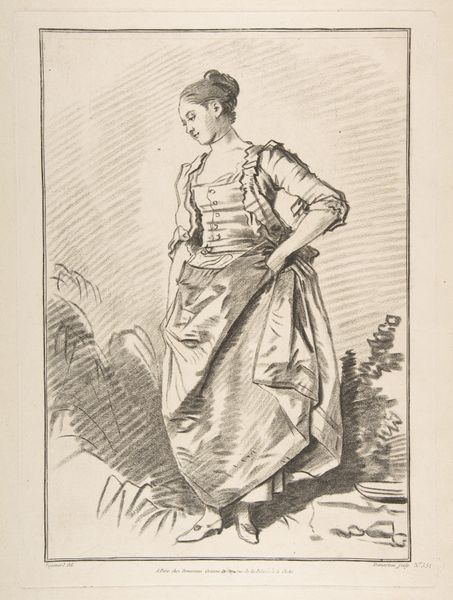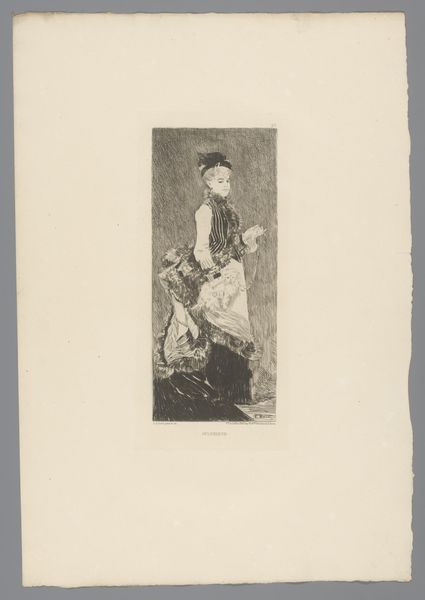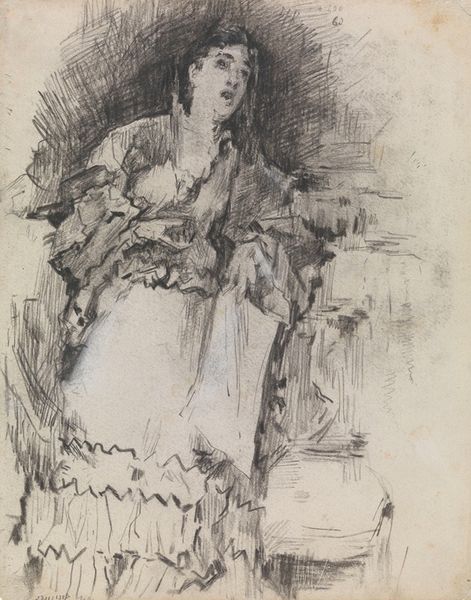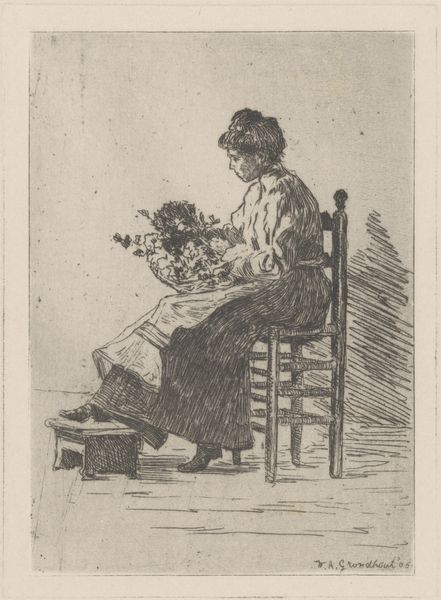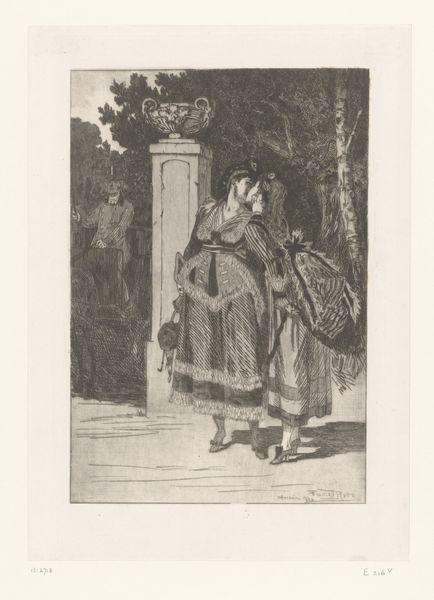
Gud tilgive hende: Tiggersken var hendes mor 1797 - 1798
0:00
0:00
Dimensions: 295 mm (height) x 195 mm (width) (bladmaal), 199 mm (height) x 149 mm (width) (plademaal)
Curator: Standing before us is Goya's etching from 1797-98, "God Forgive Her: The Beggar Was Her Mother," currently held here at the SMK. What's your immediate take? Editor: It's stark, emotionally chilling. The dramatic contrast heightens the scene, the woman’s averted gaze creates an incredible sense of discomfort. Curator: Goya masterfully uses the aquatint to create those dramatic shadows and tonal gradations, doesn’t he? The light really sculpts the scene, almost like a stage drama. What draws you to this emotionally? Editor: Well, as an historian, the overt class critique speaks volumes. Look at the social and political tumult of Spain at the time, then reflect upon the sharp division between the haves and have-nots represented in such direct proximity. The elegant lady attempts distance, a gesture almost as loud as Goya's commentary. The symbols, the fan and dress juxtaposed to the figure behind tell a story beyond their forms. Curator: Precisely, the fan acts as a barrier. She hides, perhaps from her mother, perhaps from the truth of her own identity? These symbols build powerful associations, speaking across time. The psychological element feels incredibly modern. The figure blends archetypes of Madonna, mourning woman, with potent, contemporary meanings and anxieties, showing continuity between past, present, and an uncertain future. Editor: And considering this was created as part of 'Los Caprichos', it was very much aimed at sparking debate on those very anxieties amongst his audience. This image specifically offers us such direct context, its title stating "God forgive her: The beggar was her mother”. This reveals his broader critical scope toward moral hypocrisy that he felt defined Spanish society at that time. Curator: And it speaks volumes about enduring cultural hypocrisy. The piece's starkness creates room for personal meaning; while deeply embedded in history, it speaks about our present, perhaps that’s the secret to the endurance of symbols – constant shifts and redetermination within social space. Editor: Indeed, the politics of representation are always in flux, and Goya anticipated so much. It remains as unnerving today. Thank you for such fascinating commentary on this engraving. Curator: A truly revelatory image. Thank you for sharing such thoughtful insights on "God Forgive Her".
Comments
No comments
Be the first to comment and join the conversation on the ultimate creative platform.
